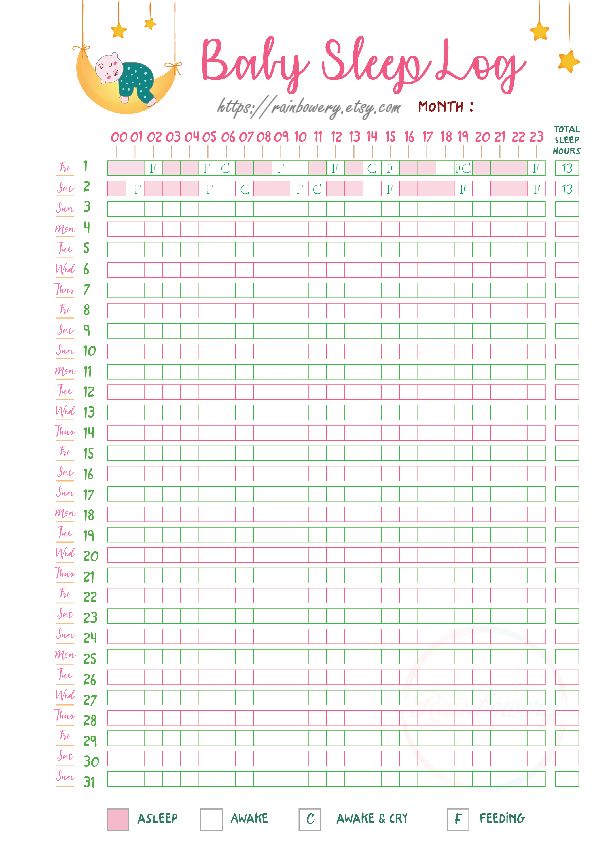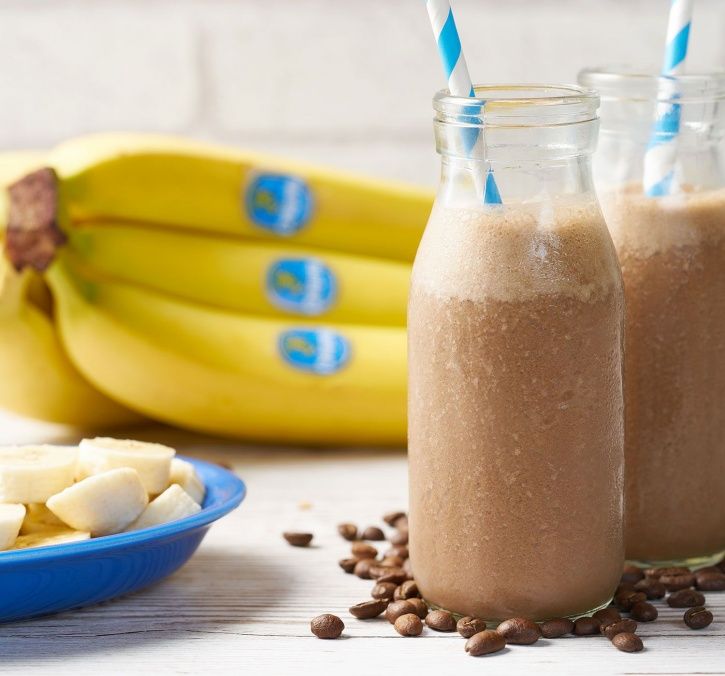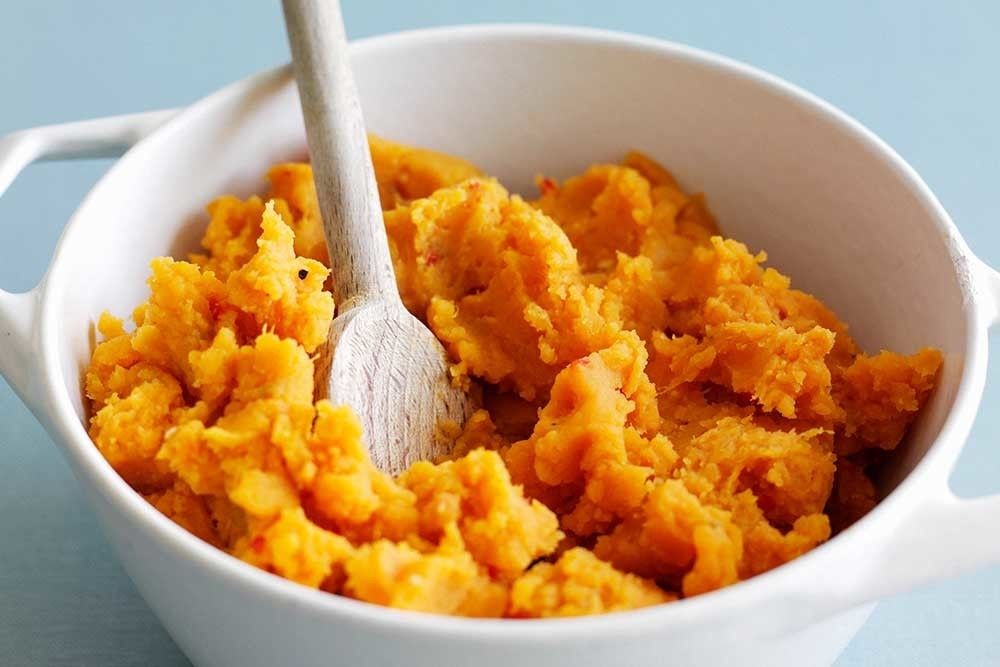Feeding baby solids canada
Feeding your baby in the first year
Feeding your baby in the first year of life is an exciting adventure for parents and babies alike. It’s about development, nutrition, curiosity, sharing and learning. Attachment also grows as you go about your daily routine with your baby.
You can help your baby develop a lifetime of healthy eating habits with the right start.
The first 6 months
For the first 6 months of life, breastfed babies will get what they need from their mother’s milk.
- Babies who are exclusively or partially breastfed should get a daily supplement of vitamin D, which is available as drops.
- Breast milk has the right amount and quality of nutrients to suit your baby’s first food needs.
- Breast milk also contains antibodies and other immune factors that help your baby prevent and fight off illness.
If breastfeeding is not an option, use a store-bought iron-fortified infant formula for the first 9 to 12 months.
- Formula should be cow milk-based.
- Homemade formulas made from canned, evaporated, whole milk (cow or goat), or any plant-based beverage, are not recommended as a breast milk substitute.
- Homemade formulas can contain harmful germs and lack important nutrients that can make your baby sick.
- Rice, soy, almond or other plant-based beverages, even when fortified, are not appropriate as a breastmilk substitute as they are nutritionally incomplete for infants. There is no evidence that soy-based formula will prevent your child from developing an allergy.
- Soy-based infant formulas should only be used as an alternative to cow milk-based formula if your baby has galactosemia (a rare disorder that will affect how your baby’s body processes simple sugar) or if your baby cannot consume dairy-based products for cultural or religious reasons.
- Talk to your doctor if you are unsure which formula is best for your child.
If your baby has allergies, or if allergies run in the family, see below for specific recommendations about when and how to introduce allergenic foods (such as eggs or peanuts).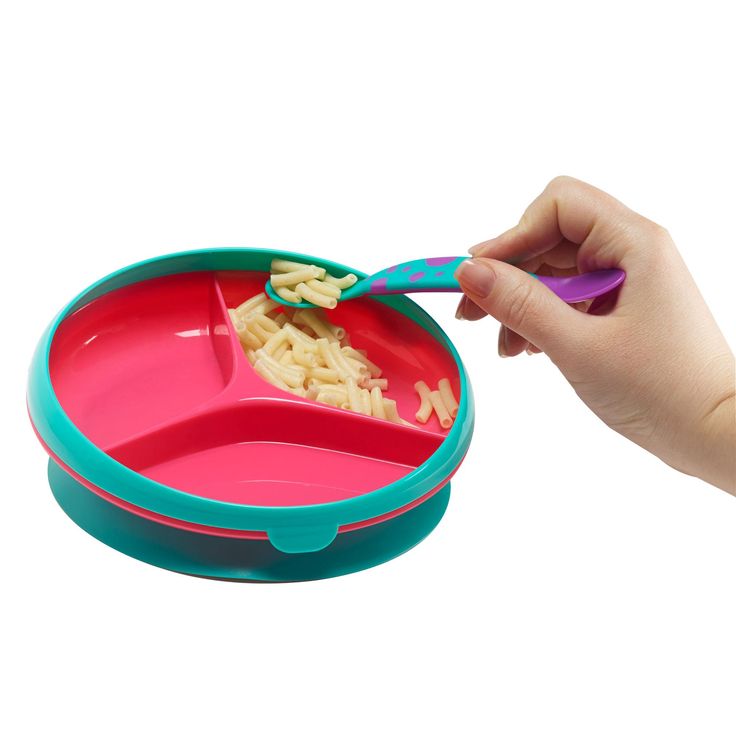
Introducing solid foods
At about 6 months, most babies are ready for solid foods. Along with other foods, you can continue to breastfeed as long as it is comfortable for you and your baby, even well into the toddler years.
You’ll know baby is ready to start other foods when they:
- Can sit up without support, lean forward, and have good control of their neck muscles.
- Ability to pick up food and try to put it in their mouth.
- Hold food in their mouth without pushing it out with their tongue right away.
- Show interest in food when others are eating.
- Open their mouth when they see food coming their way.
- Can let you know they don’t want food by leaning back or turning their head away.
Remember that all babies are different. Some babies may be ready a few weeks before or just after 6 months. However, waiting after 6 months to introduce other foods increases your baby’s risk of iron deficiency.
What foods should we start introducing our baby to first?
There are many ways to introduce solid food.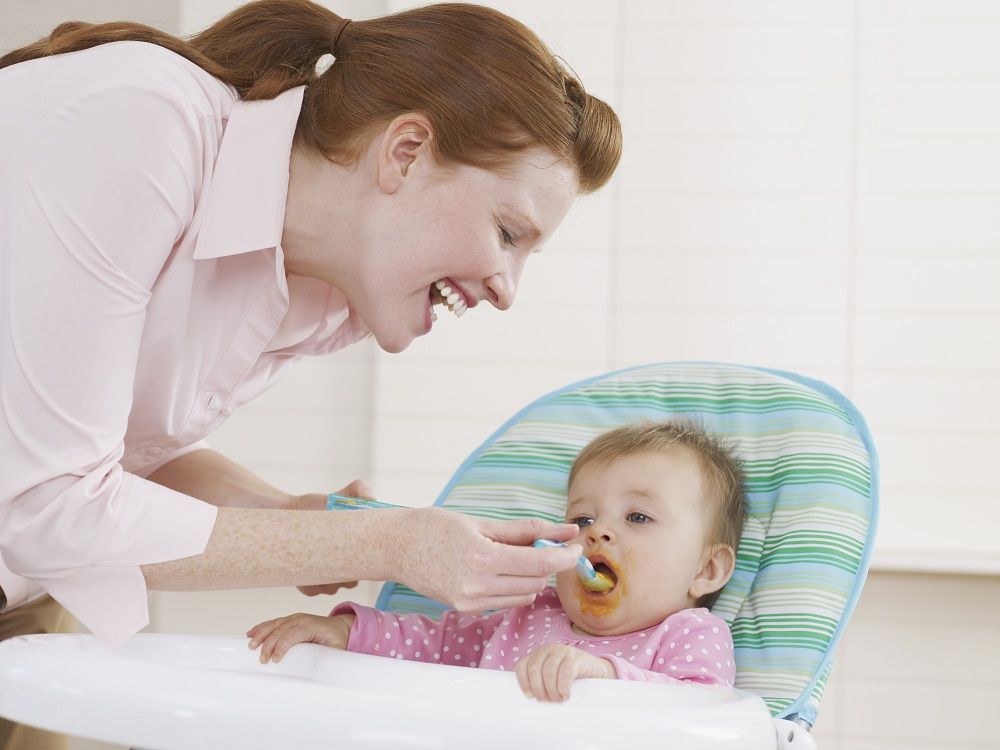 The first foods usually vary from culture to culture and from family to family.
The first foods usually vary from culture to culture and from family to family.
Start with foods that contain iron, which babies need for many different aspects of their development. Meat, poultry, cooked whole egg, fish, tofu, and well-cooked legumes (beans, peas, lentils) are good sources of iron. Store-bought iron-fortified infant cereals such as oat, wheat, barley or rice are also common first foods because they are good sources of iron. Offer iron-rich foods at least twice per day.
Healthy foods that your whole family is eating are the best choice for your baby. You can use commercial baby foods, but read the label to ensure there is no added salt or sugar. A variety of textures (such as lumpy, tender-cooked and finely minced, puréed, mashed or ground), and soft finger foods are recommended. As baby gets older, offer foods with more texture.
| First foods - Around 6 months | |
|---|---|
| Iron-rich foods | Puréed, minced, diced or cooked meat, fish, chicken, tofu, mashed beans, peas or lentils, eggs, iron-fortified infant cereal. |
| After 6 months | |
| Grain products | Iron-fortified infant cereal, small pieces of dry toast, small plain cereals, whole grain bread pieces, rice and small-sized pasta. |
| Vegetables | Puréed, mashed, lumpy or pieces of soft cooked vegetables. |
| Fruit | Puréed, mashed or lumpy soft fruit. Pieces of very ripe soft fresh fruit, peeled, seeded and diced or canned fruit (not packed with syrup). |
| Milk products | Dairy foods like full-fat yogurt, full-fat grated or cubed pasteurized cheeses, cottage cheese. |
| 9 to 12 months | |
| Milk | Whole cow’s milk (3.25%) can be introduced if breastmilk is no longer available, between 9-12 months. After 12 months of age, your baby should not take more than 25 ounces (750 mL) of milk per day. |
Introducing common food allergens
You can start to introduce common allergenic foods—like peanut products or eggs—when you are starting your baby on other solid foods, usually around 6 months of age.
However, if your baby is at high risk of developing an allergy (has allergies such as eczema, or a parent or sibling with an allergic condition) you can start after baby is 4 months old, but not sooner. Talk to your doctor if you are unsure.
Waiting until after 6 months to try to prevent an allergy is not recommended.
- When introducing foods that are common food allergens, it’s best to offer no more than one new food per day. You may want to wait a day or two before you introduce another. This makes it easier to identify a food that may have caused a reaction.
- If your baby is tolerating the allergenic food, continue offering it a few times a week to maintain tolerance.
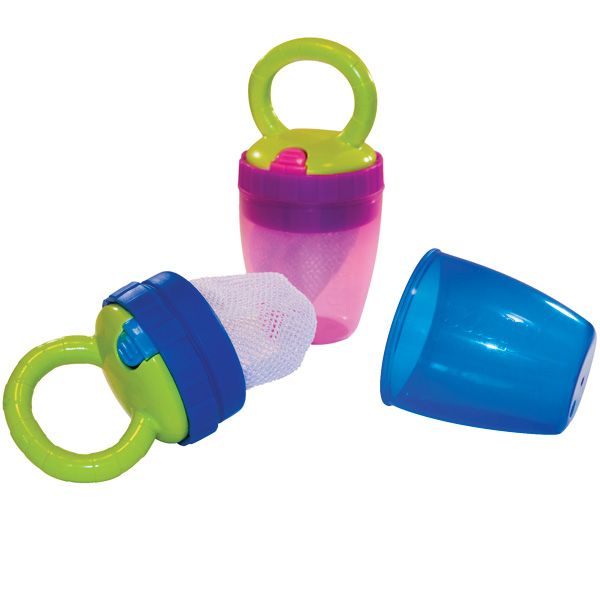 If an allergic reaction occurs, contact your doctor.
If an allergic reaction occurs, contact your doctor. - Make sure these new foods are smooth and small enough so that your baby isn’t at risk of choking. When introducing peanut products to young infants, try mixing a bit of peanut butter with some water, breast milk, or a puréed fruit or vegetable that your baby has had before. For older infants, spread a bit of smooth peanut butter on a piece of thin toast crust or offer a peanut puff product.
How much should I feed my baby?
Follow your baby’s cues for how much to feed. Start by offering a teaspoon or two. Don’t rush. Some babies need to try a food many times before accepting it. If she’s not hungry, she’ll turn her head and close her mouth. If she’s hungry, she’ll get excited and open up.
Never trick or coax her to eat more by playing games or offering sweetened foods. Babies who are allowed to follow their own hunger cues are much less likely to overeat later in life.
Try foods with different tastes and textures to help your baby learn how to handle foods in her mouth.
Water and juice
Babies who are exclusively breastfed don’t need extra water. When your baby begins to eat other foods, you can start to offer water occasionally, in an open cup.
- Babies and children don’t need to drink juice. Too much juice can cause diarrhea and can fill up small stomachs, decreasing your baby’s appetite for nutritious foods. Too much juice can also cause early childhood tooth decay.
- Offer water to babies and young children between meals and snacks if they are thirsty. If you choose to offer juice, be sure it is only 100% fruit juice (with no added sugar). Limit juice to 125 mL (4 oz.) per day.
Are there any foods my baby shouldn’t eat?
- Babies shouldn’t be offered sugary drinks or foods, such as candies, soda/pop or energy drinks.
- Don’t give honey to babies under a year old, as there is a risk of infant botulism (food poisoning).
- If you have concerns, please speak to your health care provider.
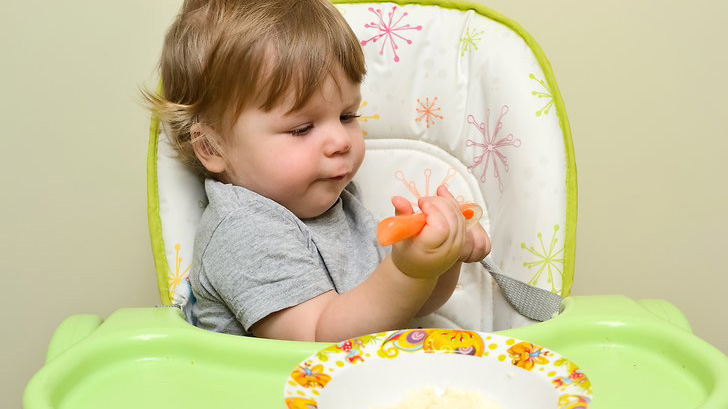
Is there anything else I should know about feeding my baby?
- Always wash your hands before preparing your baby’s food, and wash your baby’s hands before they eat.
- Wipe your baby’s gums with a soft, damp cloth twice a day for good oral health.
How can I prevent choking?
Young children don’t know how to chew food into tiny pieces. And they haven’t learned how to bring a piece of food back up when it gets caught going down. Foods most likely to cause choking are small, round or cylindrical in shape, like hot dogs, whole grapes, carrot slices, seeds and hard candy.
To protect your baby:
- Always supervise them while they are eating.
- Make sure your baby is sitting down to eat.
- Grate raw vegetables such as carrots to make them easier to chew.
- Cook hard fruits and vegetables to soften them.
- Slice round foods such as hot dogs or grapes lengthwise.
- Remove pits from fruits.
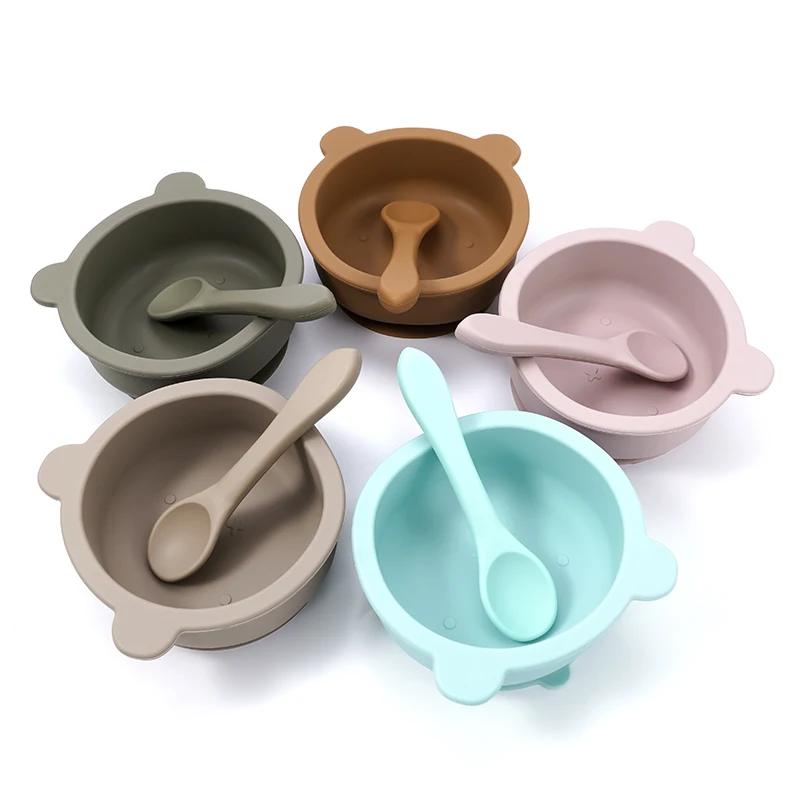
- Chop or scrape stringy meat and add broth to moisten it.
- Spread sticky foods like nut butters thinly on a cracker or toast rather than bread.
- Don’t feed your baby whole nuts, raisins, popcorn, gummy candies, hard candy, or fish with bones.
Developmental milestones related to feeding
| Age | Physical milestones | Social milestones |
|---|---|---|
| Birth to 4 months |
|
|
| 4 to 6 months |
|
|
| 6 to 9 months |
|
|
| 9 to 12 months |
|
|
| 12 to 18 months |
|
|
| 18 to 24 months |
|
|
More information from the CPS
Additional resources
Reviewed by the following CPS committees
- Allergy Section
- Nutrition and Gastroenterology Committee
- Public Education Advisory Committee
Last updated: January 2020
Starting Solid Foods .
 issues & concerns
issues & concernsHealth Canada, the Canadian Pediatric Society, the American Academy of Pediatrics, IBFAN, UNICEF, the WHO Global Strategies on Infant Feeding and most paediatric societies around the world recommend exclusive breastfeeding to about six months. Many health professionals suggest starting solid foods at four months of age; many now say you must not start before six months of age. However, most babies do fine with exclusive breastfeeding to six months of age or even a little longer. You should start your baby on solids when s/he shows signs of being ready for solids, not by the calendar. See below.
Why start solid foods?
- Because there comes a time when breastmilk no longer supplies all your baby’s nutritional needs. (This does not mean, as some uninformed people say, that there is no nutritional value in breastmilk after the baby is six months old.) A full term baby will start requiring iron from other sources by 6 to 9 months of age.
 The calories supplied by breastmilk may become inadequate by 8 to 9 months of age, although some babies can continue to grow well on breastmilk alone well past a year. But just because they can grow well on breastfeeding alone is not a reason to delay introduction of solids when the baby is obviously ready for them. See below about the baby’s cues that he is ready to eat.
The calories supplied by breastmilk may become inadequate by 8 to 9 months of age, although some babies can continue to grow well on breastmilk alone well past a year. But just because they can grow well on breastfeeding alone is not a reason to delay introduction of solids when the baby is obviously ready for them. See below about the baby’s cues that he is ready to eat.
- Because some babies not started on solids by a certain age (9-12 months) may have great difficulty accepting solid foods.
- Because it is a developmental milestone that your child passes when he starts solid foods. He is growing up. Usually, he will want to eat solids just as you do. He is ready to participate with the rest of the family in this family activity. Why stop him?
When to start solid foods.
The best time to start solids is when the baby is showing interest in starting. Some babies will become very interested in the food on their parents’ plates as early as four months of age. By five or six months of age, most babies will be reaching and trying to grab food that parents have on their plates. When the baby is starting to reach for food, grabs it and tries to put it into his mouth, this seems a reasonable time to start letting him eat. There really is no reason to start on a specific date (four months, or six months). Go by the baby’s cues.
By five or six months of age, most babies will be reaching and trying to grab food that parents have on their plates. When the baby is starting to reach for food, grabs it and tries to put it into his mouth, this seems a reasonable time to start letting him eat. There really is no reason to start on a specific date (four months, or six months). Go by the baby’s cues.
In some cases, it may be better to start food earlier. When a baby seems to be hungry, or when weight gain is not continuing at the desired rate, it may be reasonable to start solids as early as three months of age. Starting at three months of age when things are going well, however, is not recommended (see above). But, it may be possible, with help, to continue breastfeeding alone without any addition of solids and have the baby less hungry and/or growing more rapidly. See the information sheet Protocol to Manage Breastmilk Intake. See also the information sheet Slow Weight Gain Following Early Good Weight Gain for reasons your milk supply may be down and what you can do about the decrease.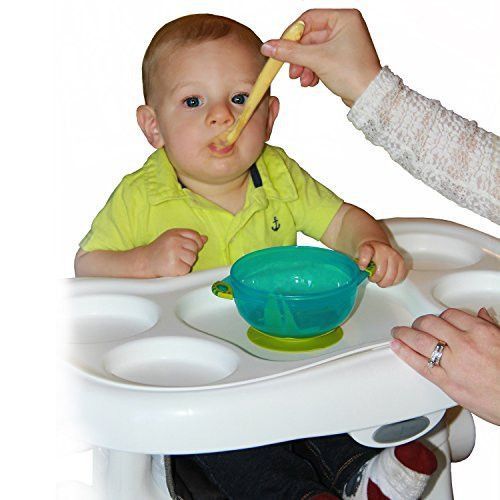 Check the videos at nbci.ca so that you can use the Protocol better. But if the techniques described here, which nevertheless will increase your baby’s intake of breastmilk, do not deal with the problem, adding solids can help also. Increasing the baby’s intake while breastfeeding is the first step and best step. There is no advantage to giving artificial baby milk (formula) and there definitely are some disadvantages, especially if it is given by bottle. The baby who is not satisfied completely at the breast may start to take more and more from the bottle, and end up refusing to take the breast completely.
Check the videos at nbci.ca so that you can use the Protocol better. But if the techniques described here, which nevertheless will increase your baby’s intake of breastmilk, do not deal with the problem, adding solids can help also. Increasing the baby’s intake while breastfeeding is the first step and best step. There is no advantage to giving artificial baby milk (formula) and there definitely are some disadvantages, especially if it is given by bottle. The baby who is not satisfied completely at the breast may start to take more and more from the bottle, and end up refusing to take the breast completely.
The breastfed baby digests solid foods better and earlier than the artificially fed baby because breastmilk contains enzymes that help digest fats, proteins, and starch. As well, breastfed babies have received a wide variety of tastes in their lives in the breastmilk, since the flavours of many foods the mother eats will pass into her milk. Breastfed babies thus accept solids more readily than artificially fed babies.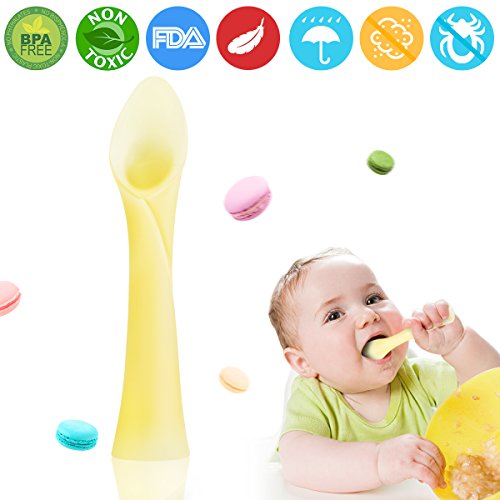 Breastfeeding is amazing, eh?
Breastfeeding is amazing, eh?
How should solids be introduced?
When the baby is starting to take solids at about six months of age, there is little difference what he starts with or the order foods are introduced. It is prudent to avoid highly spiced or highly allergenic foods at first (e.g. egg white, strawberries), but if the baby reaches for the potato on your plate, make sure it is not too hot, and let him have the potato. There is no need to go in any specific order, and there is no need for the baby to eat only one food for a certain period of time. Some exclusively breastfed babies of 6 months of age or so, dislike infant cereal. There is no need for concern and no need to persist if the baby doesn’t want the cereal. There is nothing magic or necessary about infant cereal. Offer your baby the foods that he is interested in. Allow the baby to enjoy food and do not worry exactly how much he actually takes at first. Much of it may end up in his hair and on the floor anyhow. There is no need either that foods be pureed if the baby is six months of age or older. Simple mashing with a fork is all that is necessary at first. You also do not have to be exceedingly careful about how much the baby takes. Why limit the baby to one teaspoon if he wants more? You also do not need to waste your money on commercial baby foods.
There is no need either that foods be pureed if the baby is six months of age or older. Simple mashing with a fork is all that is necessary at first. You also do not have to be exceedingly careful about how much the baby takes. Why limit the baby to one teaspoon if he wants more? You also do not need to waste your money on commercial baby foods.
- Be relaxed, feed the baby at your mealtimes, and as he becomes a more accomplished eater of solid foods, offer a greater variety of foods at any one time.
- The easiest way to get extra iron for your baby five or six months of age is by giving him meat. Infant cereal has iron, but it is poorly absorbed and may cause the baby to be constipated. If you wish your baby to be vegetarian, it would be best to speak with an experienced pediatric nutritionist about how to get iron into the baby’s diet.
- There is no reason to introduce vegetables before fruit. Breastmilk is far sweeter than fruit, so there is no reason to believe that the baby will take vegetables better by delaying the introduction of fruit.

- Respect your baby’s likes and dislikes. There is no essential food (except breastmilk). If your baby does not like a certain food, do not push it on him. If you think it important for him, wait a few weeks and offer it again.
- At about eight months of age, babies become somewhat assertive in displaying their individuality. Your baby may not want you to put a spoon into his mouth. He may want to take the spoon out of your hand and put it into his mouth himself, often upside down, so that the food falls on his lap. Respect his attempts at self-sufficiency and encourage his learning.
What if I am starting solids at 3 months?
At this age, it may be prudent to go a little more slowly. Start with ripe avocado or easily mashed foods such as banana, or homemade oatmeal. Sometimes a baby will eat better from your finger (or his!) than off a spoon. Go a little more slowly with quantities as well. But as the baby tolerates solids, both quantity and variety of foods can be increased, as the baby desires. Incidentally, why are you starting solids at three months? Many grandmothers are keen that the baby start “real food”, but if there is not a good reason to start at 3 months, don’t. (The most common legitimate reason to start earlier than five or six months of age is poor weight gain not corrected by correcting latch, using compression, switching back and forth, using domperidone).
Incidentally, why are you starting solids at three months? Many grandmothers are keen that the baby start “real food”, but if there is not a good reason to start at 3 months, don’t. (The most common legitimate reason to start earlier than five or six months of age is poor weight gain not corrected by correcting latch, using compression, switching back and forth, using domperidone).
What If I Am Already Supplementing With Formula?
Starting solids early is a way to prevent supplementing the baby with formula by bottle. Formula may be added to solids so that baby consumes the extra calories (from the formula) by spoon instead of by bottle.
Solids or breast first?
There seems to be considerable worry when a child is starting solids about whether to give the breast first or give solid food first. If breastfeeding and the introduction of solid foods both are going well, it probably does not matter much. Indeed, there is no reason that a baby needs both breast and solids every time he eats.
Starting Solid Foods, 2009©
Written and revised (under other names) by Jack Newman, MD, FRCPC, 1995-2005©
Revised by Jack Newman MD, FRCPC, IBCLC and Edith Kernerman, IBCLC, 2008, 2009©
How is complementary foods introduced in other countries?
Each country has its own peculiarities of the introduction of complementary foods. Somewhere complementary foods are introduced later or earlier, somewhere they traditionally use other products for the first complementary foods or introduce them in a different sequence. Do you want to know what is the difference between your little one and a little Indian or Frenchman getting acquainted with new food?
Saturday, October 17th, 2020
- Seal
- Share
Germany . Complementary foods begin at the age of 5-6 months, the first product is carrot mousse. A week later, it is replaced with mashed potatoes and carrots with the addition of vegetable oil. A week later, meat and fruit juice are added to this puree. It turns out that seven-month-old children receive mashed potatoes from meat, vegetables, juice and vegetable oil. Approximately two weeks after meeting with meat, the baby receives his first porridge. Interestingly, it is immediately recommended to cook porridge with 3.5% whole milk. Fruit juice is added to the finished porridge. A month after the introduction of cereals (approximately about 8 months), fruit and grain purees appear in the child's diet, they are made from grains, fruits and vegetable oil. But cottage cheese, yogurt and other fermented milk products are put aside for the age of over a year: it is believed that they are harmful to children under 12 months old.
A week later, meat and fruit juice are added to this puree. It turns out that seven-month-old children receive mashed potatoes from meat, vegetables, juice and vegetable oil. Approximately two weeks after meeting with meat, the baby receives his first porridge. Interestingly, it is immediately recommended to cook porridge with 3.5% whole milk. Fruit juice is added to the finished porridge. A month after the introduction of cereals (approximately about 8 months), fruit and grain purees appear in the child's diet, they are made from grains, fruits and vegetable oil. But cottage cheese, yogurt and other fermented milk products are put aside for the age of over a year: it is believed that they are harmful to children under 12 months old.
Rich, juicy pear flavor, natural flavor, and no sugar or starch - that's Gerber® Williams Pears one-component puree.
BUY
Austria . The first complementary foods are introduced at the age of 5-7 months, babies receive vegetable puree with rapeseed oil. A month later, children are introduced to cereals, a month later - to fruit puree. A month later, fish, meat and even grated nuts appear in the diet of young Austrians. But about milk and dairy products, the Austrians agree with their neighbors, and babies get them strictly after a year.
A month later, children are introduced to cereals, a month later - to fruit puree. A month later, fish, meat and even grated nuts appear in the diet of young Austrians. But about milk and dairy products, the Austrians agree with their neighbors, and babies get them strictly after a year.
France . Young Frenchmen receive vegetable purees with the addition of vegetable or butter as the first food. This happens in about six months. After a couple of weeks, the baby is offered fruit puree. At 8 months, the baby is introduced to meat, fish and boiled mushrooms, from 10 months the baby eats cheese. The French do not like porridge, children get it after a year.
UK . At about 4.5-5 months, children are offered the first complementary foods - a bottle of liquid rice porridge on the water. This is followed by vegetables, fruits, porridge and meat. Dairy products are introduced after a year.
Argentina . Complementary foods traditionally start with yogurt and are given to babies between 5 and 6 months of age. This is followed by fruits, vegetables, cereals and meat.
This is followed by fruits, vegetables, cereals and meat.
Canada . The first complementary food is porridge, age 4-6 months. A month later, vegetable or fruit puree and a little oil are added to the porridge. At 8 months, meat and fish are introduced.
Cuba . The hot tropics, where there is an abundance of fruits all year round, influenced the order of introduction of complementary foods. Start at 5-6 months with fruit puree. Moreover, orange puree is among the first recommended products. Following the fruit puree, meat is introduced into the child's diet (at 6-7 months), and only then cereals.
Spain . At 5 months, babies are introduced to corn and rice porridge, then fruit puree is mixed into the porridge, and only then vegetables and meat are introduced.
Iran . From 4 months, the baby is given a few grains of rice and a couple of sips of lamb broth every day. At 6 months, the first real complementary foods appear - rice porridge with almonds.![]() There are no fruit and vegetable purees, children immediately get pieces of fruit and try to chew them as best they can. Children are given meat from 8 months, including fatty lamb.
There are no fruit and vegetable purees, children immediately get pieces of fruit and try to chew them as best they can. Children are given meat from 8 months, including fatty lamb.
Indonesia . Rice porridge from 3 months, porridge with fruit additives from 4 months. Vegetables from 5 months. Meat and dairy products - after three years.
Sweden . Complementary foods start with cereals at 5-6 months, followed by vegetables, fruits, and from 8 months and meat. Eggs and dairy products are introduced into the child's diet after a year.
Read more
What babies eat in different countries
Reviewer Kovtun Tatiana Anatolievna
6160 views
September 15, 2021
Login or register to save articles and products as favorites
The school of mothers conducted a real investigation and found out what foods the first-year-olds eat in different countries of the world. It turned out that there is something in which pediatricians from America to Europe are unanimous: complementary foods should be introduced at the age of 4-6 months.
It turned out that there is something in which pediatricians from America to Europe are unanimous: complementary foods should be introduced at the age of 4-6 months.
But we will start with the recommendations of Russian pediatricians. We asked Professor Sergei Viktorovich Belmer to talk about this. Here are his top tips.
- When it comes to complementary foods, everyone is different. The timing, sequence and range of complementary foods are always selected individually for each baby.
- There is simply no universal complementary feeding scheme that could be applicable to all children. There are only general recommendations and rules for the introduction of complementary foods that must be considered.
- Complementary foods should be introduced only after prior consultation with a pediatrician.
- At the time of the introduction of complementary foods, the baby should be healthy.
- Each new product is introduced gradually, starting with ½ teaspoon, in the morning.
 Gradually, within 7-10 days, a portion of the product is brought to the age norm.
Gradually, within 7-10 days, a portion of the product is brought to the age norm. - The recommended norm at each age and for each product is different and is presented in the National program for feeding children in the first year of life in the Russian Federation.
- For the first feeding, it is better to use industrial products, because this is a guarantee of safety, the optimal degree of grinding, the necessary vitamin and mineral composition.
- It is important that the product for the introduction of complementary foods is hypoallergenic, does not cause allergic reactions in the child (skin rashes, digestive disorders, and others). In order to minimize the risk of unwanted reactions to the introduction of complementary foods, we recommend that parents choose complementary foods with proven hypoallergenic properties. Russian pediatricians adhere to the recommendations given in the National program for optimizing the feeding of children in the first year of life, which take into account the peculiarities of babies in our country.

And in order to expand the geography of our knowledge, we asked mothers living in different countries of the world about how they introduced complementary foods to their baby.
Netherlands, Galina Petrenko, daughter 6 months old
“According to the Dutch recommendations, complementary foods are introduced at a little over 4 months. We started with a banana, then there was a zucchini, carrots and rice porridge.
Zucchini and carrots have not “went” yet - the baby just happily spits everything around them! But we give banana and rice porridge regularly. One feeding - now it's completely porridge. For now, a banana replaces half of the feeding: banana + half a bottle of the mixture.
USA, Natalya Belkina, son 10.5 months old
“Basically, everyone starts complementary foods at 6 months, but there are doctors who allow at 4. If he sits by himself and looks with envy as you eat, then it's time. In the leaflet we got from the doctor, there was a recommendation to start with rice porridge, but our pediatrician said that it was not necessary. We started with avocado and banana. My son from 6-9 months ate any puree with pleasure. But somewhere between 9 and 10 months, mashed potatoes became completely uninteresting to the child, so I try to come up with something tasty and healthy that he wants to eat himself.
We started with avocado and banana. My son from 6-9 months ate any puree with pleasure. But somewhere between 9 and 10 months, mashed potatoes became completely uninteresting to the child, so I try to come up with something tasty and healthy that he wants to eat himself.
Berries and fruits are easy, the rest is more difficult. The most popular food in the US for babies from 6-8 months: sweet potatoes, squash, applesauce, avocado, banana and, of course, cereals. Everything is just organic. Many more parents, after the first stage (6-8 months), begin to give everything from their plate and completely stop cooking separately for children. Simply cooked without salt and sugar, but with various other spices. So far we haven't been able to do that. In general, at 9 months I give everything except honey to taste.
England, Olga Chesheva, daughter 1.3 years old
“In England, complementary foods are recommended to start at 6 months. They introduce the product little by little, give the opportunity to examine the food with their hands. If a child doesn’t like a product, they don’t force it, they offer it again in a few weeks.
If a child doesn’t like a product, they don’t force it, they offer it again in a few weeks.
After entering the initial products, you can offer the child meat, fish, poultry, rice, pasta, lentils and legumes, yogurt and other dairy products, a boiled egg. Start complementary foods with once a day, gradually increasing to three meals a day by 8-9months. We decided to start at 5 months. On the very first day they gave sweet potato.
During the first week or two, they tried something new every day: an apple, a pear, a potato, porridge, a carrot. Then I started mixing the ingredients and adding greens (parsley, dill).
I think that our relaxed attitude to complementary foods and what and how my daughter eats helped a lot. We never forced and do not force - if he doesn’t want to eat, then he doesn’t want to. ”
Italy, Julia Dyachenko, daughter 1.3 years old
“In Italy, the first complementary food is rice porridge, which is diluted with vegetable broth from potatoes, carrots and zucchini. Add a teaspoon of parmesan and olive oil. In fact, it's almost like a risotto! In general, there is no such passion for cereals here, as in Russia, for breakfast, children eat cookies, croissants, and already at the age of one! In my own way, I give my daughter oatmeal, lightly ground, I add ground cookies.
Add a teaspoon of parmesan and olive oil. In fact, it's almost like a risotto! In general, there is no such passion for cereals here, as in Russia, for breakfast, children eat cookies, croissants, and already at the age of one! In my own way, I give my daughter oatmeal, lightly ground, I add ground cookies.
Thailand, Katerina Varfolomeeva, daughter 1.5 years old
“Complementary foods in Thailand are both a fairy tale and a nightmare for Russian mothers. A fairy tale, because there are a lot of fresh vegetables and fruits: mashed potatoes from zucchini, spinach and asparagus, and fruit treats from mango and banana. But if your child is allergic and you need a turkey or a rabbit, then you have to run around. There is beef, chicken, a huge selection of seafood, but no rabbit! Therefore, many Russian mothers carry food in jars with them.
It is difficult to find canned food here, they are available only in large supermarkets, but the tastes are completely different from those offered by Russian manufacturers.

 Otherwise, they will fill up and won’t want to eat solid foods. Too much milk can also lead to iron deficiency anemia.
Otherwise, they will fill up and won’t want to eat solid foods. Too much milk can also lead to iron deficiency anemia.